By Ehsan Mehmood Khan -
A decade in the making
Conflict is embedded in the structure of human society. The politically weak and opportunistic structure of the Global South is more prone to conflicts, both interstate and intrastate, whereas the Global North was able to evolve a politico-economic system backed by a vibrant civil society in the aftermath of the World War II, which worked to guard against all kinds of conflicts at large. The Global South remained a battleground for over 300 different kinds of wars and conflicts during the last century. Armed conflicts and major events involving violence continue to act as the turning points in human history, shaping the geopolitical map of the world and the geostrategic strategic choices of nation-states. The terrorist act of 9/11 was but one such defining episode.
All states, big or small, developed or developing, were directly or indirectly affected by 9/11 and its aftermath. International forces led by the US entered Afghanistan in October 2001. Thus, Pakistan became the neighbour of a state where the world powers were fighting a unique kind of war, and was thus deeply affected by another spell of instability in Afghanistan. The internal security situation in the country started worsening. The Federally Administered Tribal Areas (FATA), due to geographical proximity, ethno-linguistic similarities, religious affinity and historical linkages with Afghanistan, became the most affected part of Pakistan. Till then, FATA had been generally peaceful. During the years 2001-2002, some 93 percent of FATA and Provincially Administered Tribal Areas (PATA) had been under the government control; the control was contested only in 6 percent of FATA, and not even an inch of the area was in the control of militants. Figure-1 illustrates.
The turbulence in Afghanistan turned the tribal belt into a breeding ground for militancy, something that worked to divert the security environment of the country towards undesirable lines. The government was left with no choice but to employ the security forces to respond to the challenge of militancy. In accordance with Article 245 of the Constitution of Pakistan, security forces including the Army and Air Force were tasked to act in aid of civil powers in the conflict-ridden FATA. The Frontier Corps (K-P), Khassadars and police (in K-P and PATA) also invigorated their security related tasks. The year 2003-2004 saw a counter-militancy campaign in various areas of FATA including South Waziristan Agency (SWA). From 2001 to 2008, a total of 177 major and 266 minor operations were conducted by the Law Enforcement Agencies (LEAs) spearheaded by the Pakistan Army in FATA, wherein 1,457 LEAs personnel embraced shahadat and 3,459 were injured, some of whom even lost their limbs in the defence and security of Pakistan. However, the terrorists continued to expand their influence to an extent that at their peak during the years 2007-2008, they controlled 32 percent of FATA and Swat, control over 31 percent of the area was contested and the government controlled only about 37 percent of the area as is illustrated in Figure-2.
The most alarming feature was the militants’ control over a part of PATA. The Counter Terrorism Campaign Plan was revised, and this time a rejuvenated campaign was launched which increased the number of major operations to 475 and minor operations to 133. It included the major offensives such as Operation Rah-e-Rast in Swat and Operation Rah-e-Nijat in South Waziristan Agency (SWA). These were some of the most successful operations in the history of Pakistan. Figure-3 illustrates.
This was followed by a massive development phase, which, inter alia included a 714-kilometre long road network called the Central Trade Corridor (CTC) linking Pakistan’s Indus Highway with the Afghan Ring Road through North Waziristan and South Waziristan agencies.
After the toil of over one decade, the government now controls about 87 percent of the area i.e. the whole of K-P including PATA, and FATA sans NWA. The control is contested in about 10 percent of the area and only about 3 percent of FATA is in the control of terrorists, as has been shown in Figure-4.
It is also of note that Pakistan suffered huge physical, economic, social and psychological losses as a state and society from 2001 to 2014. Nearly 50,000 Pakistanis lost their lives during this period. Figure-5 shows the number of violent acts and casualties from 2005 to 2013.
Paul Wilkinson, former Director of the University of St. Andrews Centre for the Study of Terrorism and Political Violence noted, “Fighting terrorism is like being a goalkeeper. You can make a hundred brilliant saves but the only shot that people remember is the one that gets past you.” This is true in all cases but even more veritable for the incidents involving improvised explosive devices (IEDs) in which the human and material losses are direct rather than indirect. Unfortunately, IEDs have become a weapon of choice for terrorists around the world, more so for cornered groups like TTP. It is of note that Pakistan is not the only country hit by the menace of IEDs. According to Lieutenant General Michael D. Barbero, former Director of USA’s Joint IED Defeat Organization, who noted in an op-ed published in the Washington Post on May 18, 2013, “Around the world, there have been more than 700 IED explosions each month outside of Iraq and Afghanistan – for a total of more than 17,000 explosions in 123 countries since January 2011. These statistics clearly indicate that the IEDs will remain a threat for the foreseeable future.” More than 60 percent of the US combat casualties in Iraq and Afghanistan – 3,200 killed and 33,100 wounded since 2001 – occurred due to IEDs.
The enormity of the challenge may be observed from the fact that during the last four years, 79 percent of global IED incidents occurred in the South Asian region. Of this, approximately 6,485 incidents took place in Pakistan (21 percent of the region). In 2011, the leading three countries that were affected the most by terror-related incidents (predominantly involving IEDs) were as follows: First, Afghanistan – 6,778 incidents leading to 3,313 fatalities; Second, Pakistan – 1,680 incidents causing 1,876 fatalities; Third, India – 230 incidents incurring 623 fatalities. Child soldiers employed by the terrorists posed unique challenges in this regard. The number of IED incidents in Pakistan from 2003 to 2013 is given in Figure-6.
It may be noted that from January 29, 2014 to June 8, 2014 i.e. during the days when peace talks were being pursued by the government, TTP carried out about 20 major terror acts across the country wherein some 192 innocent Pakistanis embraced shahadat.
The security situation in Pakistan remains uncertain with the possibility of blowback upon the initiation of an operation in NWA. The security situation in cleared areas of FATA is largely under control and development is steadily underway. Recent split in the TTP and infighting has resulted in groups of terrorists killing each other. The NWA per se leaves a question mark on the overall security situation of the country. This answers the oft-posed question as to why Operation Zarb-e-Azb is being launched in NWA in mid 2014. NWA is the last stronghold of TTP as well as foreign fighters, and serves as their centre of gravity. It is from the hub of NWA that these terrorists undertake various acts of genocide across Pakistan. Certainly, terrorists, their recruiting grounds and support networks are located in many other areas of the country, yet sanitization of the NWA will work to break the backbone of their operations and pave the way for eventual cleansing of militancy from Pakistan.
Spearheaded by Pakistan Army, Operation Zarb-e-Azb is being launched by a combined force of Army, Air Force, Frontier Corps (K-P), Khassadars, Levies, intelligence agencies and other law enforcement agencies (LEAs) where available. Whereas the main operation is being launched in NWA, proactive counter-terrorism operations are being conducted in areas outside FATA to break the nexus between the TTP and its affiliates. It is of note that the operation is being undertaken against all terrorists who pick up arms against the state of Pakistan without any discrimination, under the concept of minimally essential, but effective use of force. Collateral damage is being avoided even at the cost of delay in the planned progress of theoperation. Military personnel have been trained and directed by the military high command to avoid human rights violations.
Operation Zarb-e-Azb is not an end in itself. It aims at attaining the end state as follows:
*Restoring the writ of government through use of military instruments followed by a developmental prong.
*Destroying havens and hideouts of the terrorists located in the NWA.
*Eliminating all terrorists who refuse to throw down arms against the state.
*Shaping the environment for sustainable development in FATA and other regions in the country.
People often ask as to whether the politicians and military are on a single page regarding Operation Zarb-e-Azb. The answer is simple: there is only one page, that of national defence, and the entire nation is on that same page. It has to be. Militaries fight battles on the kinetic front whereas the economic, cultural and legal wars are fought by politicians. The same holds true for Pakistan, which is among the most resilient and strongest nations on the globe. With the nation’s support, the security forces of Pakistan will surely triumph over the terrorists in the kinetic domain, which is imperative for subsequent accomplishment in non-kinetic spheres.
Media in Pakistan has a crucial role to play during this strategically decisive phase of the counter-terror campaign. It needs to project the national narrative and defeat the militant narrative. It needs to block the content that glorifies terrorism, this will boost national spirit, while improving public confidence in state institutions and military morale. These are the ingredients necessary for the success of Operation Zarb-e-Azb, a success which can lead the nation on the road to peace and prosperity.
The writer is a PhD (Peace and Conflict Studies) scholar and author of Human Security in Pakistan (published 2013) and co-author of Kashmir: Looking Beyond the Peril (published 2014) Email: [email protected]











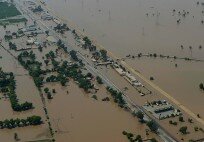
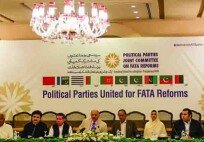





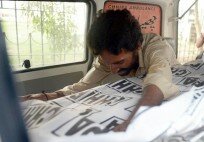
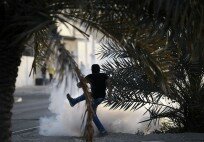
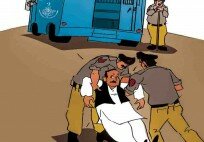

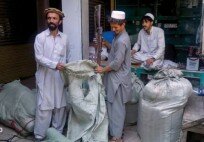









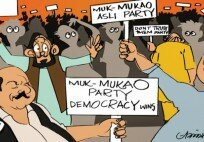







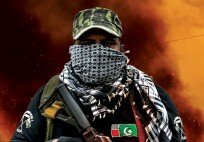
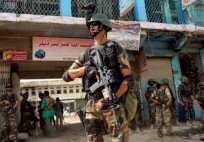




















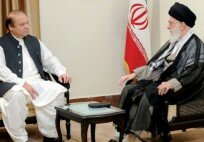









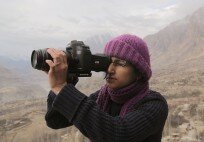















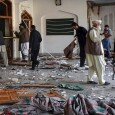
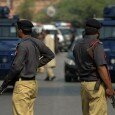

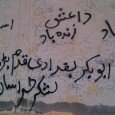

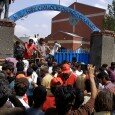

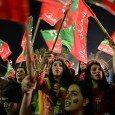
Recent Comments